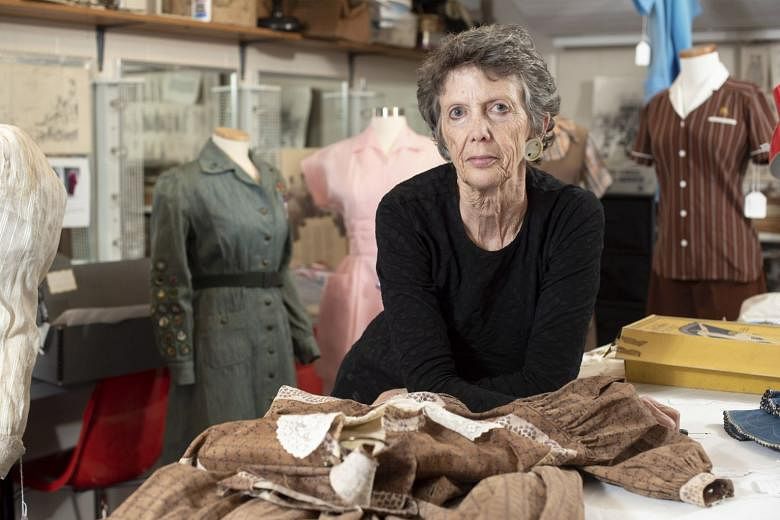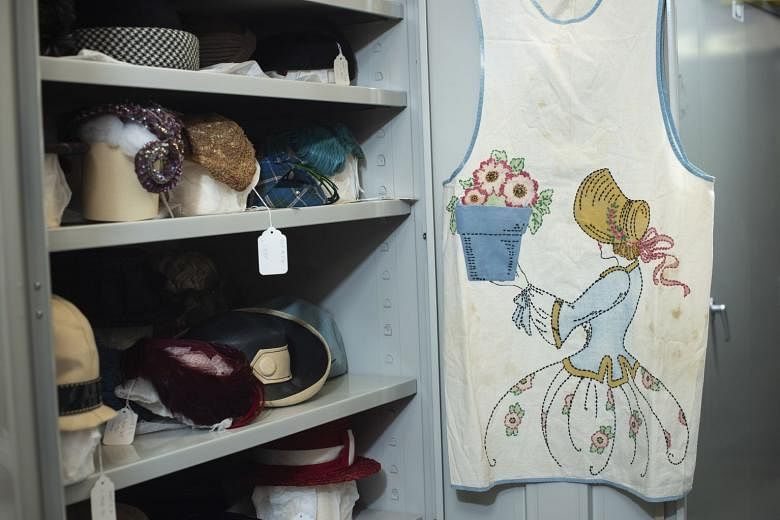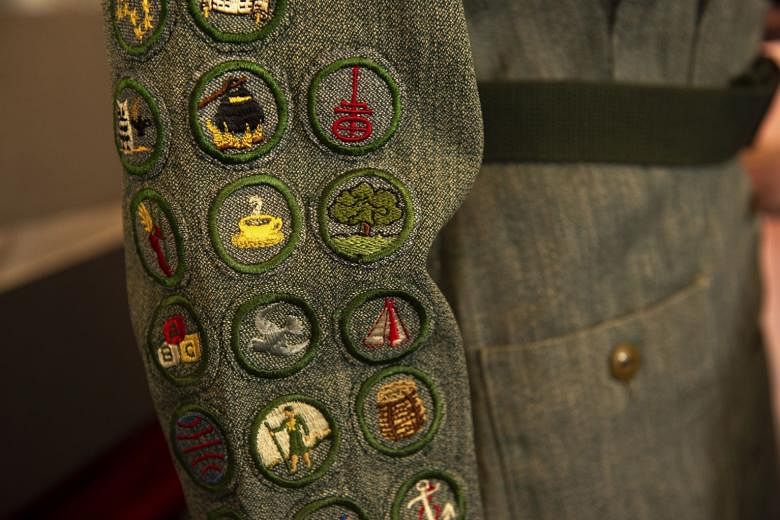NORTHAMPTON (Massachusetts) •It is possible that one of the more telling narratives of women's lives in 20th-century America is housed in 50 metal storage lockers in a basement room in the theatre department of a women's college in Northampton, Massachusetts.
To reach it, you descend a flight of stairs and pass through a cinder block corridor into a windowless space that is home to the unofficial Smith College Historic Clothing Collection: 3,000 dresses, suits, shoes, bags and accessories.
They are crammed among costume racks and cardboard boxes, jammed together on padded hangers, stacked on shelves and squirrelled away in any available nook and cranny.
Though the collection includes some designer names and some garments that belonged to famous people, the majority have unknown origins and may be stained, torn, mended and otherwise flawed in some way that reflects the exigencies of real life: families, responsibilities, hardships.
They are the kinds of garments generally overlooked or dismissed by museums and collectors of dress, who tend to focus on fashion as an expression of elitism, artistry and aspiration.
Other colleges and universities maintain textile and apparel collections, but Smith's focus on women's clothing and, more specifically, on women's "social uniforms" - clothing that signifies identity and functions as part of the archaeology of gender, complete with usage markers - sets it apart.
"It's not about couture," said Ms Jan Glier Reeder, a fashion historian who was a curator of the Metropolitan Museum's Costume Institute show on Charles James, one of the most influential fashion designers of the 20th century, in 2014. She is also a Smith graduate.
"It's about how we study the past in a very intimate way," she said.
How much is that actually worth? As the fate of the collection becomes a subject of debate within the college, it has stirred up uncomfortable questions about what constitutes "value" in the context of clothes, the liberal arts and the current conversation about how we talk about women's history. Even at an institution like Smith: an esteemed women's college and the alma mater of famous feminists Gloria Steinem and Betty Friedan.
In 1974, Professor Catherine Smith, a graduate of the college and a costume designer, returned as a professor in the theatre department. When she started sifting through the costumes used in productions, she discovered that many of them were historical garments donated by alumnae.
Prof Smith began separating out those pieces that were too fragile or were potentially important - a 1895 travelling suit, for example - from the obvious costumes (Shakespearean monk's robes).
It occurred to her, she said, that while such garments are generally not seen as valuable when it comes to providing clues to what it meant to be a woman in 20th-century America, they may be worth their weight, if not in gold, at least in semi-precious gems.
"We have libraries of books, which are very valuable," she said, noting that just as the college collects and preserves paintings and prints, as well as documents such as diaries, yearbooks and letters, the clothes can be seen as "journals into women's lives from the past".
"My sense is, that's a very valuable commodity to save and to have for the future," she said.
Clothes come via donations from alumnae, as do most university collections, and are purchased at auction, including on sites such as eBay. Prof Smith funds much of the shopping herself and donates the garments she buys to the college.
Now the question is whether the collection can become more than one woman's crusade.
To do so, it would need funding and formal institutional acknowledgement. Prof Smith, 69, is reluctant to retire without a resolution.
She has discussed the collection, its future and uses, with different provosts of the college over the years.
"To put it politely, they were sceptical and worried about the long-term value," she said.
One of the problems is that much of the collection's worth is hard to quantify. It lies in notions about the value of honouring and studying the lives of unsung women, not in any specific dollar amount tied to the quality of a textile or the profile of the person who once wore it.
Clothing is also expensive to protect and display - it requires climate control and appropriate light and storage. Prof Smith dreams of a dedicated space for the collection and a dedicated curatorial position.
In the last few years, alumnae have become involved, saying if any college should celebrate the history and information embedded in women's clothing - if any college has the opportunity to change attitudes both internally and more broadly - it should be a school like Smith.
And because the college's new provost Michael Thurston, who will start his position in July, is a former board member of Historic Northampton, Prof Smith is continuing her quest.
"For a women's college to celebrate women's clothing instead of somehow feeling it devalues the achievements of the college to study ordinary shmattes? It would take some guts," she said.
NYTIMES



